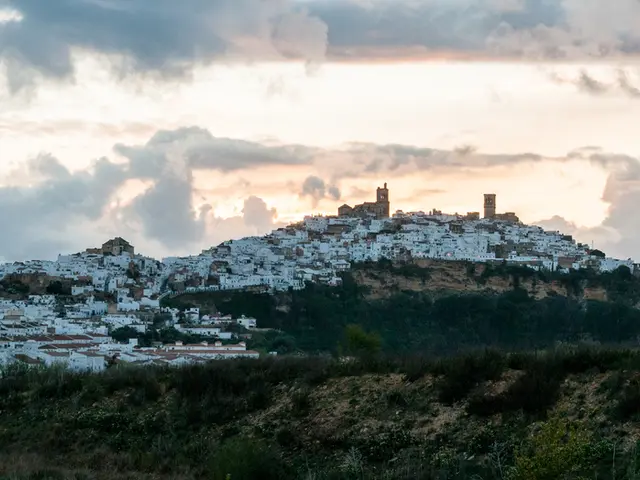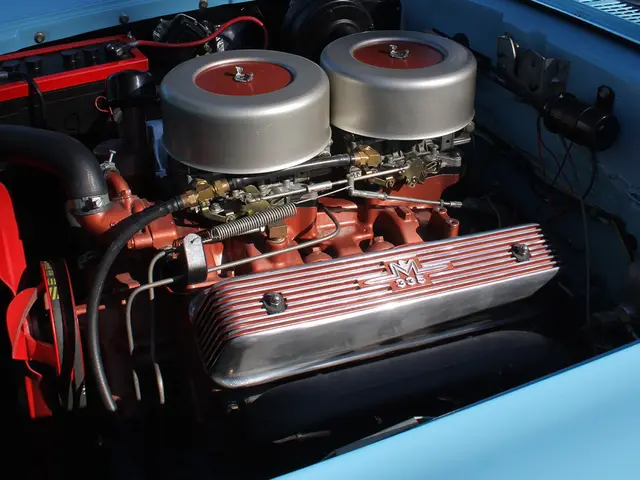Guidance on Ethical and Eco-Friendly Fashion: A Sustainable Approach
In the current fashion scene, there's a growing issue with fast fashion taking center stage. But don't fret, because the remedy is here: slow fashion. Slow fashion is the antithesis of fast fashion—all about high-quality, sustainable fashion and distancing itself from fast fashion's negatives.
But what exactly is slow fashion, and how can local LA clothing manufacturers help you nail your creative goals? Time to dive in!
So, What's Slow Fashion?
Slow fashion is a fashion movement that values...
- Choosing Domestic Clothing Manufacturers: Opting for domestic over foreign production helps keep carbon emissions low and supports local employment.
- Sustainable Materials: Embracing eco-friendly fabrics like organic cotton, hemp, or Tencel lessens waste and provides for a healthier planet.
- Ethical Practices: Ensuring fair labor conditions and promoting a positive work environment for all parties involved.
This change of pace from fast fashion's toxic outlook is a breath of fresh air for our planet and its inhabitants.
Fast Fashion vs. Slow Fashion
Fast fashion versus slow fashion: let's break it down.
Materials
Petrochemical textiles are fast fashion's bread and butter. They're cheap to produce and easy to implement. But this convenience comes at a hefty environmental cost due to their non-biodegradable nature and excessive use of energy and water during production[1].
On the flip side, slow fashion materials, such as organic cotton, hemp, and Tencel, are sustainable alternatives that are better for the earth.
Water Consumption and Waste
Both fast and slow fashion generate waste and consume large quantities of water. However, the extent of this impact varies.
Fast fashion's wastefulness results in staggering statistics: an estimated 93 billion cubic meters of water are used annually, and the industry contributes heavily to pollution and climate change through the use of fossil fuels during production[1].
Slow fashion, on the other hand, aims to minimize waste by recycling materials and lessening water consumption through the use of sustainable materials[1]. Moreover, it eschews fossil fuels in favor of eco-friendly practices.
Selling Clothes
Fast fashion is about speed, bulk sales, and throwaway pieces. Companies that focus on quick turnaround times churn out cheaply made clothing that ends up in landfills, wreaking havoc on our planet[1].
Slow fashion, on the other hand, targets specific consumer markets, collaborating with boutiques, New York Fashion Week models, and retailers. Businesses like independent fashion designer Greg Lauren's collaboration with Banana Republic demonstrate the potential for slow fashion to garner notable recognition[2].
Slow Fashion at The Evans Group
At The Evans Group, we're all in on slow fashion. We focus on empowering designers to create their own clothing lines and making sustainability a priority without compromising speed or quality in the fashion industry[2].
Our team of experts hand-holds designers through the process of sourcing sustainable fabrics and navigating production, creating new clothing lines that fit seamlessly within the slow fashion movement[2].
The Choice is Yours
Are you ready to make the switch to slow fashion? Choose a better tomorrow for both our planet and the fashion industry by opting for sustainable, eco-friendly fashion. The future of fashion is now, my dear fabric enthusiasts. Let's make it a green one.
[1] – Center for Environmental Law and Policy, "Fast Fashion and the Environment" (Accessed 04.03.2022)
[2] – Business of Fashion, "The Sustainability Agenda: A Beginner's Guide" (Accessed 04.03.2022)
[3] – Greenpeace, "Detox My Fashion" (Accessed 04.03.2022)
[4] – World Wildlife Fund, "Fashion's Biodiversity Footprint" (Accessed 04.03.2022)
[5] – Ellen MacArthur Foundation, "A New Textiles Economy: Redesigning Fashion's Future" (Accessed 04.03.2022)
- The slow fashion movement prioritizes high-quality fashion that is both sustainable and ethical, as evident in The Evans Group's approach to clothing production.
- By choosing domestic clothing manufacturers, slow fashion aims to reduce carbon emissions and support local employment.
- Fast fashion, on the other hand, relies on petrochemical textiles that pose significant environmental risks due to their non-biodegradable nature and energy consumption.
- Slow fashion materials, such as organic cotton, hemp, and Tencel, are eco-friendly alternatives that are better for the planet compared to fast fashion's petrochemical textiles.
- Slow fashion aims to address the issue of waste by recycling materials and minimizing water consumption, whereas fast fashion's impact results in considerable pollution and climate change.
- Slow fashion collaborates with various fashion industry players, like boutiques, New York Fashion Week models, and retailers, demonstrated by businesses like Greg Lauren's collaboration with Banana Republic.







